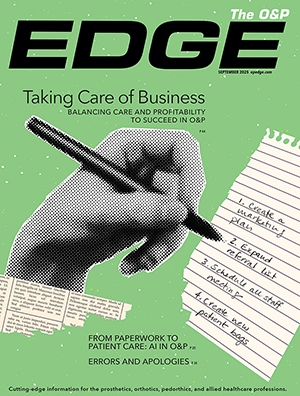Proper human gait is a complex orchestration of balance, strength, and mobility, all hinging on the integrity of the foot and ankle. Even small disruptions to the hindfoot, particularly the calcaneus and heel pad, can significantly impair walking, balance, and posture.
The implications extend beyond musculoskeletal discomfort—abnormal gait mechanics can cascade into long-term consequences like hip misalignment, back pain, and joint deterioration. For individuals suffering from partial heel loss, achieving a return to functional and pain-free walking can feel like a distant hope. Conventional approaches such as shoe inserts or off-the-shelf orthotics work well for many cases, but for some, these approaches fall short, especially when patients need barefoot mobility or require something more durable.
Support authors and subscribe to content
This is premium stuff. Subscribe to read the entire article.




